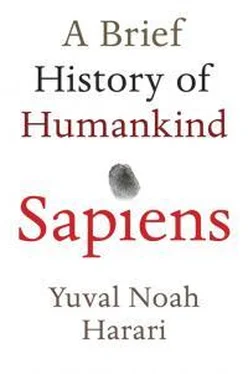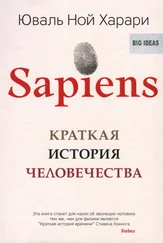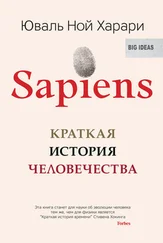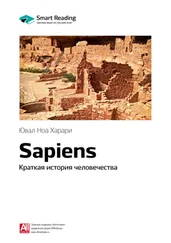In 1825, a British engineer connected a steam engine to a train of mine wagons full of coal. The engine drew the wagons along an iron rail some twenty kilometres long from the mine to the nearest harbour. This was the first steam-powered locomotive in history. Clearly, if steam could be used to transport coal, why not other goods? And why not even people? On 15 September 1830, the first commercial railway line was opened, connecting Liverpool with Manchester. The trains moved under the same steam power that had previously pumped water and moved textile looms. A mere twenty years later, Britain had tens of thousands of kilometres of railway tracks. 1
Henceforth, people became obsessed with the idea that machines and engines could be used to convert one type of energy into another. Any type of energy, anywhere in the world, might be harnessed to whatever need we had, if we could just invent the right machine. For example, when physicists realised that an immense amount of energy is stored within atoms, they immediately started thinking about how this energy could be released and used to make electricity, power submarines and annihilate cities. Six hundred years passed between the moment Chinese alchemists discovered gunpowder and the moment Turkish cannon pulverised the walls of Constantinople. Only forty years passed between the moment Einstein determined that any kind of mass could be converted into energy – that’s what E = mc 2means – and the moment atom bombs obliterated Hiroshima and Nagasaki and nuclear power stations mushroomed all over the globe.
Another crucial discovery was the internal combustion engine, which took little more than a generation to revolutionise human transportation and turn petroleum into liquid political power. Petroleum had been known for thousands of years, and was used to waterproof roofs and lubricate axles. Yet until just a century ago nobody thought it was useful for much more than that. The idea of spilling blood for the sake of oil would have seemed ludicrous. You might fight a war over land, gold, pepper or slaves, but not oil.
The career of electricity was more startling yet. Two centuries ago electricity played no role in the economy, and was used at most for arcane scientific experiments and cheap magic tricks. A series of inventions turned it into our universal genie in a lamp. We flick our fingers and it prints books and sews clothes, keeps our vegetables fresh and our ice cream frozen, cooks our dinners and executes our criminals, registers our thoughts and records our smiles, lights up our nights and entertains us with countless television shows. Few of us understand how electricity does all these things, but even fewer can imagine life without it.
An Ocean of Energy
At heart, the Industrial Revolution has been a revolution in energy conversion. It has demonstrated again and again that there is no limit to the amount of energy at our disposal. Or, more precisely, that the only limit is set by our ignorance. Every few decades we discover a new energy source, so that the sum total of energy at our disposal just keeps growing.
Why are so many people afraid that we are running out of energy? Why do they warn of disaster if we exhaust all available fossil fuels? Clearly the world does not lack energy. All we lack is the knowledge necessary to harness and convert it to our needs. The amount of energy stored in all the fossil fuel on earth is negligible compared to the amount that the sun dispenses every day, free of charge. Only a tiny proportion of the sun’s energy reaches us, yet it amounts to 3,766,800 exajoules of energy each year (a joule is a unit of energy in the metric system, about the amount you expend to lift a small apple one yard straight up; an exajoule is a billion billion joules – that’s a lot of apples). 2All the world’s plants capture only about 3,000 of those solar exajoules through the process of photosynthesis. 3All human activities and industries put together consume about 500 exajoules annually, equivalent to the amount of energy earth receives from the sun in just ninety minutes. 4And that’s only solar energy. In addition, we are surrounded by other enormous sources of energy, such as nuclear energy and gravitational energy, the latter most evident in the power of the ocean tides caused by the moon’s pull on the earth.
Prior to the Industrial Revolution, the human energy market was almost completely dependent on plants. People lived alongside a green energy reservoir carrying 3,000 exajoules a year, and tried to pump as much of its energy as they could. Yet there was a clear limit to how much they could extract. During the Industrial Revolution, we came to realise that we are actually living alongside an enormous ocean of energy, one holding billions upon billions of exajoules of potential power. All we need to do is invent better pumps.
* * *
Learning how to harness and convert energy effectively solved the other problem that slows economic growth – the scarcity of raw materials. As humans worked out how to harness large quantities of cheap energy, they could begin exploiting previously inaccessible deposits of raw materials (for example, mining iron in the Siberian wastelands), or transporting raw materials from ever more distant locations (for example, supplying a British textile mill with Australian wool). Simultaneously, scientific breakthroughs enabled humankind to invent completely new raw materials, such as plastic, and discover previously unknown natural materials, such as silicon and aluminium.
Chemists discovered aluminium only in the 1820s, but separating the metal from its ore was extremely difficult and costly. For decades, aluminium was much more expensive than gold. In the 1860S, Emperor Napoleon III of France commissioned aluminium cutlery to be laid out for his most distinguished guests. Less important visitors had to make do with the gold knives and forks. 5But at the end of the nineteenth century chemists discovered a way to extract immense amounts of cheap aluminium, and current global production stands at 30 million tons per year. Napoleon III would be surprised to hear that his subjects’ descendants use cheap disposable aluminium foil to wrap their sandwiches and put away their leftovers.
Two thousand years ago, when people in the Mediterranean basin suffered from dry skin they smeared olive oil on their hands. Today, they open a tube of hand cream. Below is the list of ingredients of a simple modern hand cream that I bought at a local store:
deionised water, stearic acid, glycerin, caprylic/caprictiglyceride, propylene glycol, isopropyl myristate, panax ginseng root extract, fragrance, cetyl alcohol, triethanolamine, dimeticone, arctostaphylos uva-ursi leaf extract, magnesium ascorbyl phosphate, imidazolidinyl urea, methyl paraben, camphor, propyl paraben, hydroxyisohexyl 3-cyclohexene carboxaldehyde, hydroxyl-citronellal, linalool, butylphenyl methylproplonal, citronnellol, limonene, geraniol.
Almost all of these ingredients were invented or discovered in the last two centuries.
During World War One, Germany was placed under blockade and suffered severe shortages of raw materials, in particular saltpetre, an essential ingredient in gunpowder and other explosives. The most important saltpetre deposits were in Chile and India; there were none at all in Germany. True, saltpetre could be replaced by ammonia, but that was expensive to produce as well. Luckily for the Germans, one of their fellow citizens, a Jewish chemist named Fritz Haber, had discovered in 1908 a process for producing ammonia literally out of thin air. When war broke out, the Germans used Haber’s discovery to commence industrial production of explosives using air as a raw material. Some scholars believe that if it hadn’t been for Haber’s discovery, Germany would have been forced to surrender long before November 1918. 6The discovery won Haber (who during the war also pioneered the use of poison gas in battle) a Nobel Prize in 1918. In chemistry, not in peace.
Читать дальше



![Юваль Ной Харари - Sapiens. Краткая история человечества [litres]](/books/34310/yuval-noj-harari-sapiens-kratkaya-istoriya-cheloveche-thumb.webp)





![Юваль Ной Харари - 21 урок для XXI века [Версия с комментированными отличиями перевода]](/books/412481/yuval-noj-harari-21-urok-dlya-xxi-veka-versiya-s-ko-thumb.webp)


